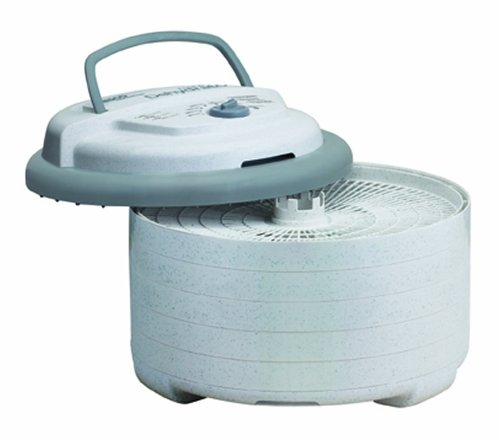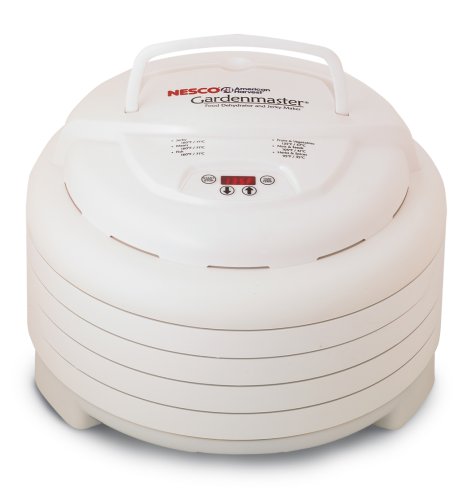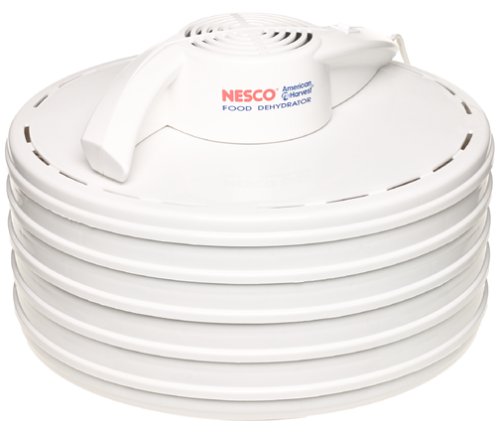 Features of the Excalibur Model ED-2900 Dehydrator * Controlled environment for a wide variety of uses, i.e. making fruit roll-ups and trail mixes, drying flower arrangements and herbs, plus various uses for art and crafts, and photos * 9 Trays with 15 square feet of drying area * Includes 9 polyscreen tray liners * Includes 28-page dehydrating guide * 7" FAN/600 WATTS * 1-Year warranty
Features of the Excalibur Model ED-2900 Dehydrator * Controlled environment for a wide variety of uses, i.e. making fruit roll-ups and trail mixes, drying flower arrangements and herbs, plus various uses for art and crafts, and photos * 9 Trays with 15 square feet of drying area * Includes 9 polyscreen tray liners * Includes 28-page dehydrating guide * 7" FAN/600 WATTS * 1-Year warrantyIn the fall time the herb growing season starts to wind down, but this doesn't mean the end of your herbs usefulness in the kitchen. Drying herbs in the autumn is a great way to extend their usefulness. Imagine setting around the table with your family on a cold winter night, with the smell of your favorite herbs steaming out from your favorite dish that you so lovingly prepared. Not only that but dried herbs look very appealing hang in in your kitchen or the pantry.
A herb that contains high moisture can be a bit more difficult to dry. Herbs such as bay, dill, thyme, marjoram, summer savory, sage, basil and oregano are just a few that lend themselves to drying.
Herb plants that are going to be harvested should be harvested in the early morning, in this way they have not extended much energy. Also if you can gather them just before they go into bloom they will be in their best condition for you to produce great dried herbs.
Increased flavor is obtained from the herbs if the leaves are dried whole, but when used they should be crumbled first before being added to your favorite dish . Herbs can be kept for a year or two, but for better results and increased flavor is recommended that they be used within six to 12 months. Your dried herbs should be stored in a airtight container placed in a cool dark dry place.
Herb drying can be carried out in a few different ways. These are a drying rack, hanging in warm well ventilated shady spot, microwaving, dehydrator and not really drying but freezing the herb leaves will preserve herbs also.
4 common methods a drying herbs
#1: Air drying
For small batches of herbs one should make sure first that they are rinsed off and all the water padded off. Pick off any of the wilted leaves and just leave the healthy looking ones. Next tie a bundle of herbs tightly around stems and insert into a brown paper bag. Make sure that this bag is large enough as to leave lots of room around the leaves of the plants. It is best practice to hang the herbs upside down as this allows the essential oils to flow into the leaves and increases the flavor greatly. You should hang them in a dark warm area with the temperature somewhere around 70 to 80F.
#2: Microwave drying
For people that don't have the patience or just want to get to their herbs dried quickly, the microwave offers a great solution. The disadvantage is that you can only do small batches at the time. The high-frequency waves produced by the microwave will cook the herbs from the inside to the outside. The drying process usually only takes two or three minutes in the microwave on a high setting.
#3: Oven drying
Oven drying is not a recommended way of drying herbs, as it evaporates the water and essential oils in the herbs to quickly, but for those that can't wait it will suffice. Herb roots can be successfully dried in the oven. Thick walled herbs such as basil and rosemary do well. It should only take a couple hours in the oven to produce your dried herbs.
#4: Dehydrator
The main advantage of using a dehydrator is that you can control the temperature and air circulation. This tends to produce a high quality dried herb. Another advantage of using a dehydrator is that you can dry large quantities of herbs and also herbs with high moisture without any problems.
So if you're looking to prolong your bounty that you have grown in your summer herb garden be sure to try drying your herbs for winter use.
Herbs can give you a sexy strong healthy body, so if that,s what you are looking for check this out!
http://www.herbgarden.rolltra.com
dehydrator


